Part 5: Dances of Anatolia, the Caucasus, and the Middle East
15 Dances of Anatolia
1. Anatolia and Turkey (Türkiye)
Anatolia, also known as Asia Minor, is a large peninsula of land that connects Europe to Asia. Today Anatolia forms a large part of the modern Republic of Türkiye. Anatolia has long been a multicultural region. Of course, the Turks are the largest ethnic group in the region, but it has also been the home to Kurds, Assyrians, Pontic Greeks, and Armenians. In this chapter, we will concentrate on the dances of the Turks, Kurds, and Assyrians. We will look at the Armenians in the next chapter and we already talked about the Greeks in chapter 12. Turkey itself is actually on two continents (Europe and Asia).
1.1. Geography and History
Türkiye (the preferred name for the country widely known as Turkey — pronounced roughly TOOR-kee-yay or /’tur.ki.je/ in IPA) lies at the intersection of Asia and Europe and has long been a bridge between the two. The Bosporus Straight is the major waterway that runs through the middle of the major city of Istanbul and connects the Black Sea to the Aegean Sea and the Mediterranean. On the west side of the Bosporus is Europe and on the east side is Anatolia. Türkiye is bordered on the north by the Black Sea. In the west, its neighbors are Bulgaria, Greece, and the Aegean Sea. On the south, it borders the Mediterranean, Syria, and Iraq and on the east, it shares borders with Georgia, Armenia, and Iran.
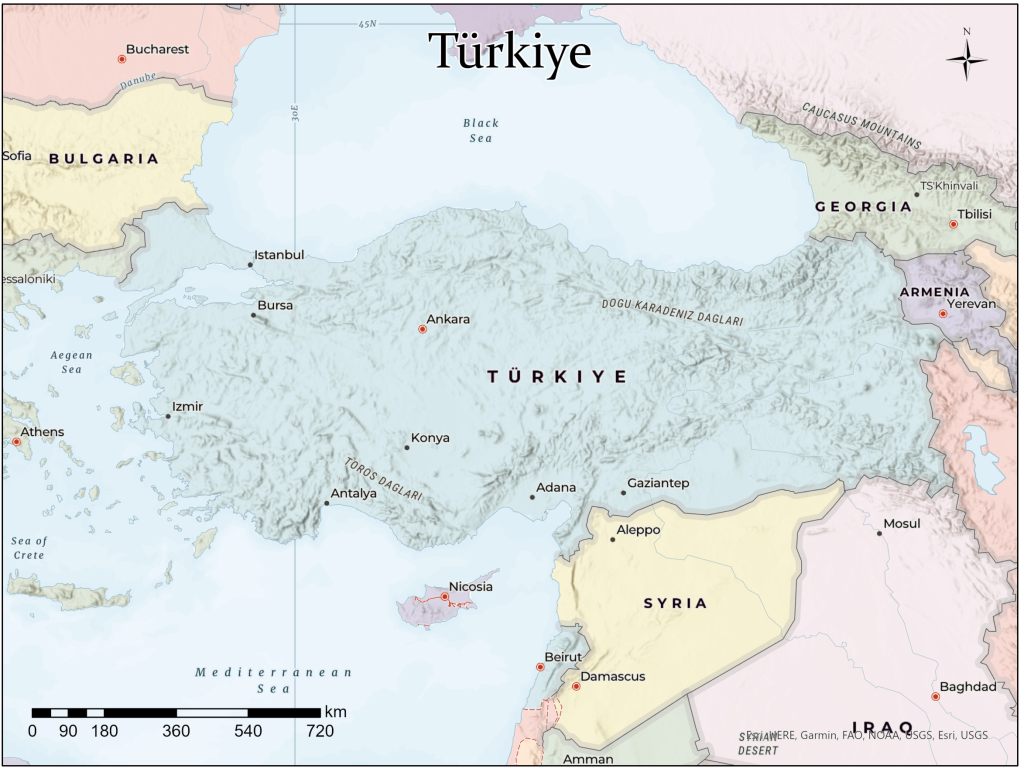
Byzantium (now Istanbul) was founded by the Ancient Greeks and was considered one of the great cultural centers of the ancient world. When the Roman empire split into separate Eastern and Western Empires, Byzantium became the Eastern Empire’s capital and was renamed Constantinople. It became a center of the Eastern Orthodox Church. Later, when the Turkish-speaking Sultanate formed the Ottoman Empire, Constantinople was renamed again as Istanbul. It remains to this day a hub of culture and exchange as the primary inlet to the Black Sea from the Mediterranean.
Western Türkiye astounds visitors because so many historical places and events that we associate with Ancient Greece actually happened in what is present-day Türkiye along The Dardanelles and the Eastern Aegean seaboard. For example, Ancient Troy, famous for the Greek legend of the Trojan horse, sits halfway down Türkiye’s Aegean coast. Hippocrates, the Greek physician whose Hippocratic oath modern doctors still follow, practiced in Bergama, near Troy. The impressive Greek/Roman ruins of Ephesus, the jewel of the Ancient Greek conquests in the Middle East, lie along the Aegean coast south of Izmir. The Apostles Luke and John Christianized Greece from Ephesus, where they are both buried. And Izmir was the capital of the realm of King Midas, famous in Greek mythology for his golden touch.
The Ottoman Empire, based in Türkiye was one of the major world powers in the 17-19th centuries CE. Ottoman Turkish influence is felt throughout Eastern Europe and the Middle East, as we saw when we looked at Eastern European dance and music. Partly because of the relative tolerance of the Ottomans, there are a number of ethnic minorities who live in Anatolia. Along the southern border, and on the border with Iraq and Iran, there is a very large Kurdish minority, with their own distinct language and culture. For generations the Kurds have been fighting to create an independent country of their own in Türkiye, Syria, Iraq, and Iran.’
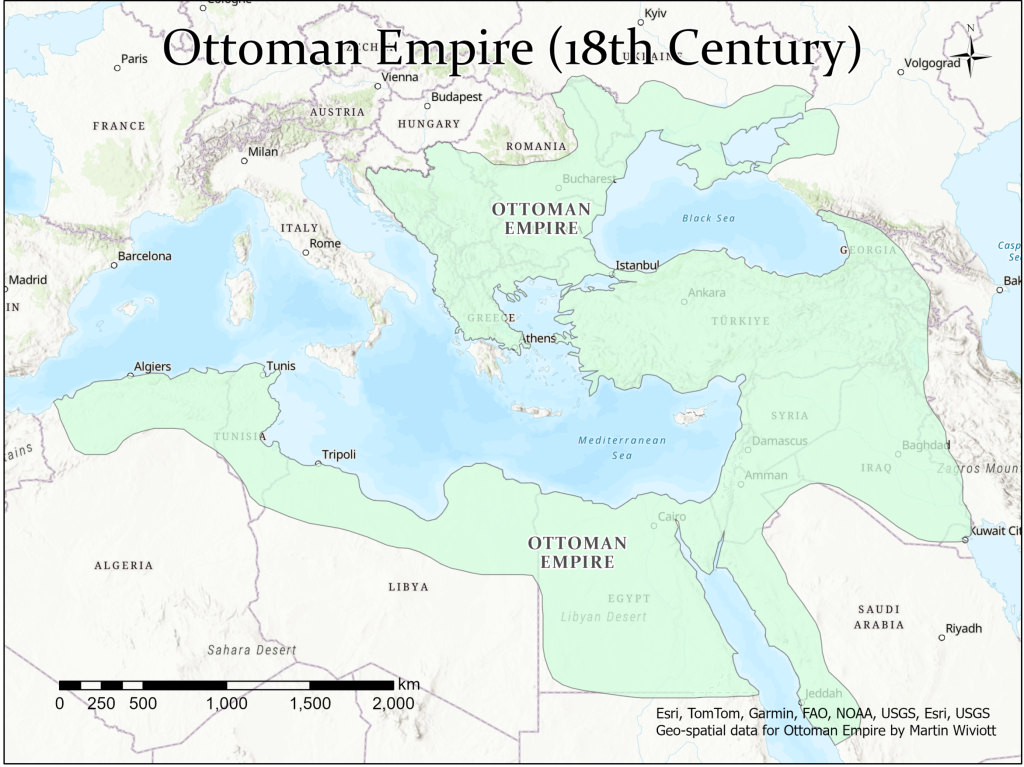
Another group that has sought recognition are the Armenians. What is now Eastern Türkiye used to be part of the nation of Armenia, a Christian country where they spoke an Indo-European language. After World War I, the Turkish government set out to assimilate Armenians and Kurds. What happened to the Armenians of Türkiye is widely recognized in the international community as a genocide. The Turks vehemently reject this characterization (and it is, in fact, a crime in Türkiye to suggest that there was an Armenian genocide). The Laz live on the Black Sea on the border with Georgia. They speak a Kartvelian language related to Georgian. Their folk culture is closely related to that of the Georgians. We will discuss Armenian dance in the next chapter.
1.2. Turkish Music
Turkish music often sounds harsh to western ears. It relies heavily on an instrument called the zurna, which is a double-reeded instrument similar to the oboe. Zurnas are loud and their high-pitched, raspy tone quality is a bit of an acquired taste. Indian snake charmers play a shawm which is a type of zurna. The Turks also play the kemençe, which is a fiddle-like instrument. They play a number of strummed lute-like instruments such as the saz or bağlama, the strummed zither called a kanun, and a flute-like instrument called a kaval.
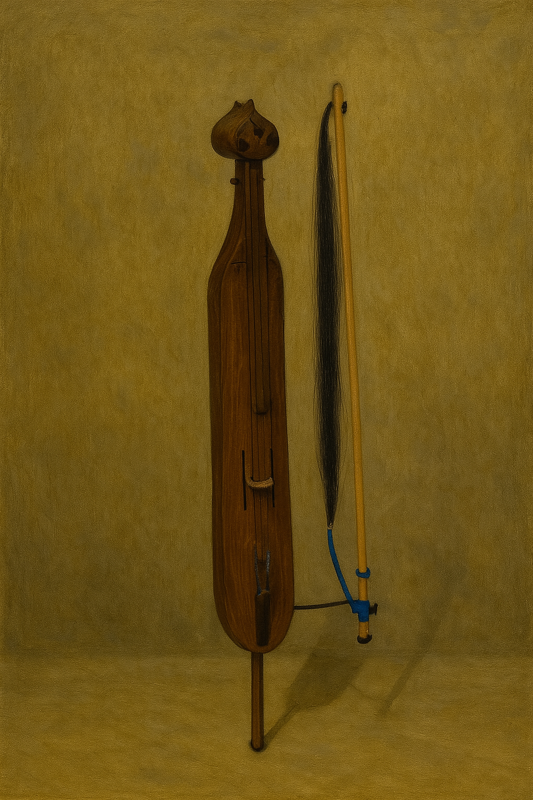
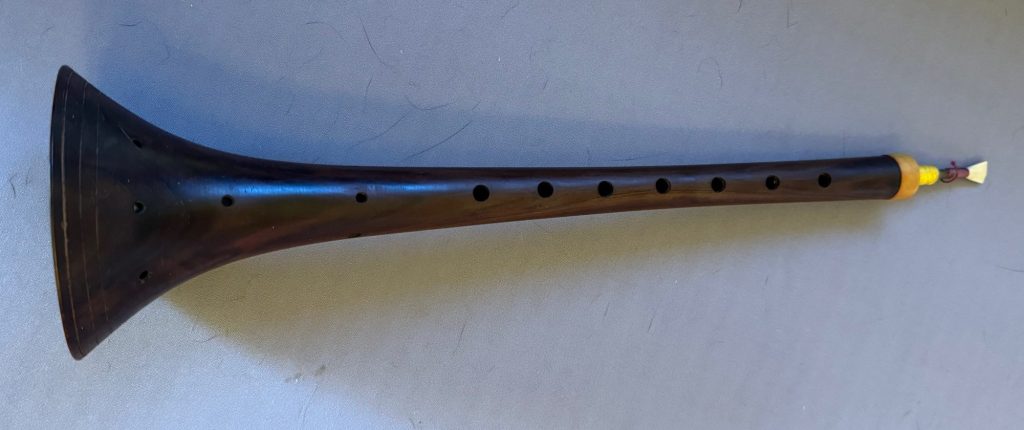
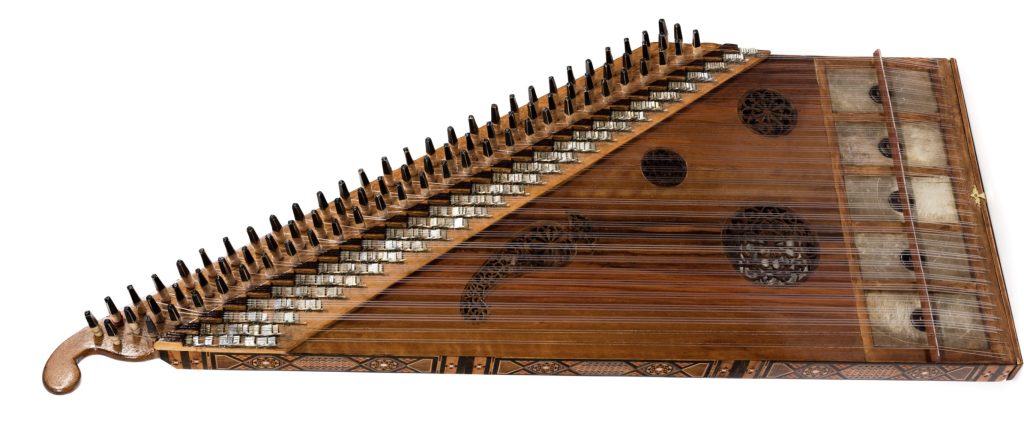

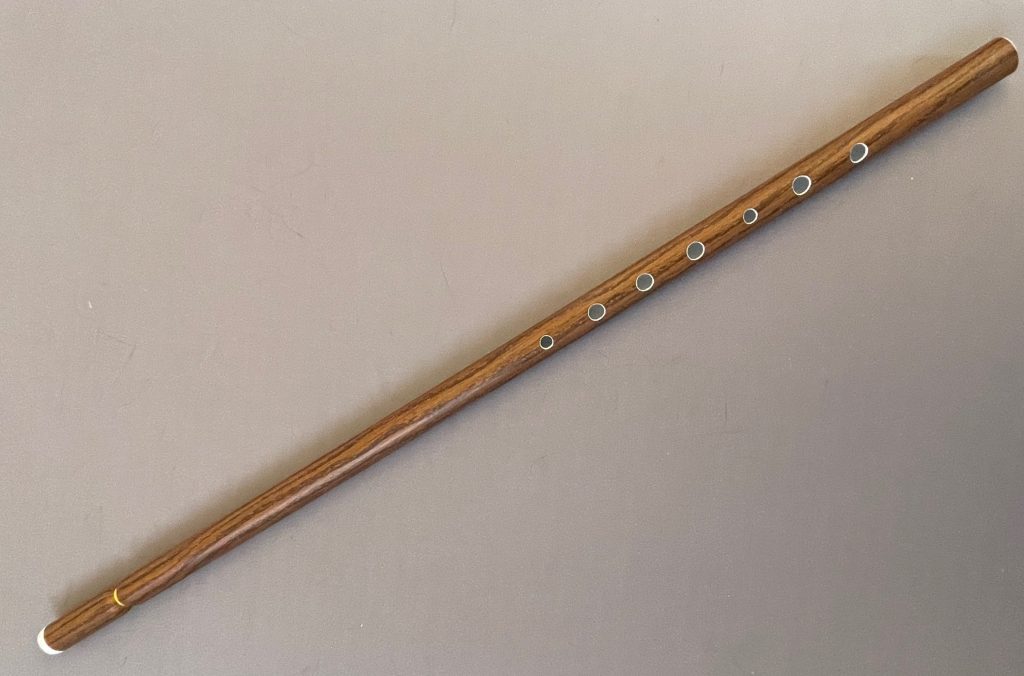

- Kaval: https://youtu.be/5b-vlg4RsCo
- Zurna: https://youtu.be/R8vO3oVGX4Y
- Kemençe: https://youtu.be/mM45-Ao82zg (bonus –they’re doing the Black Sea dance Horon here)
- Bağlama music: https://youtu.be/h1sUEQLC7f8
1.3. Turkish Traditional Dress
There are several regional variations in Turkish costume. In the North along the Black Sea, the men wear distinctive black baggy pants called Şalvar. They also wear black vests, black turbans, and a lot of gold chains. In the Southwest of the country, like Gaziantep, the men tend to wear similar costumes but in browns, oranges, and greens. Very characteristic of this region are the wide woven belts. Women throughout the country wear harem pants, aprons, and long coats as well as pill-box hats and veils. Their hats often sport gold coins and gold braiding.
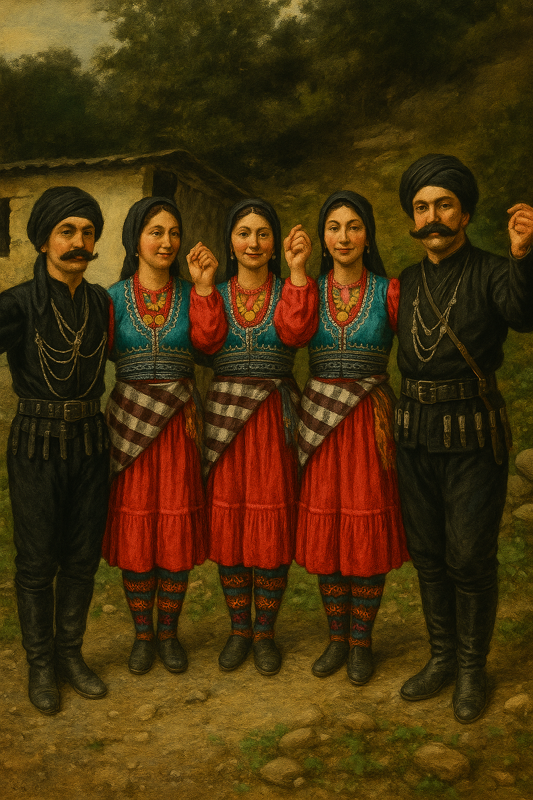
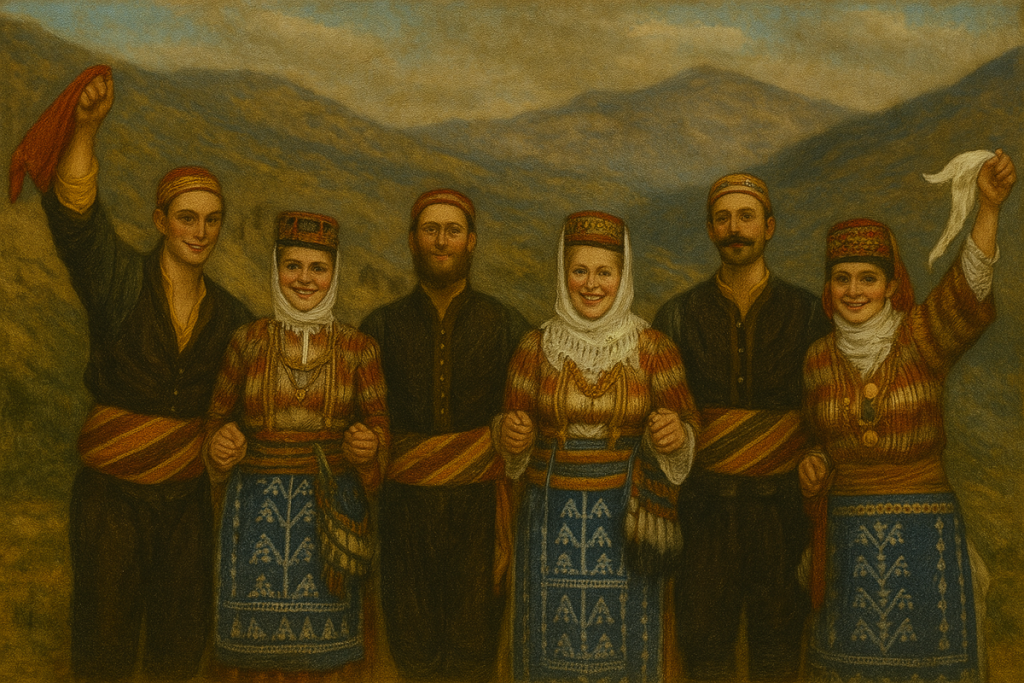
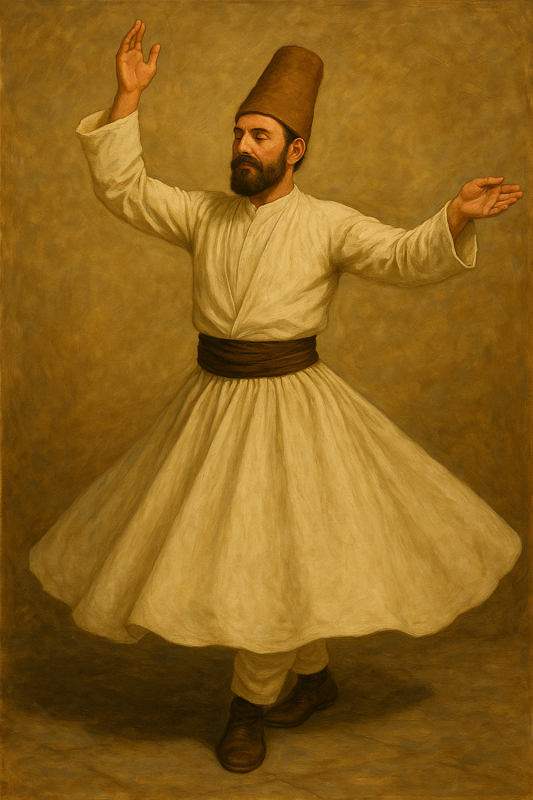
1.4. Turkish Dances
Black Sea dances (Horon) are characterized by very sharp arm movements and jerky steps. Another unique style of dances, the Kaşik or spoon dances, involves dancers creating their own percussion by snapping wooden spoons together as they dance. Turkey has its own equivalent of the Greek Zeibekkikos, the Zeybek. Like their Greek counterparts/compatriots, the dancers go into a trance-like state and imagine themselves to be eagles. Another religious dancing tradition are the Whirling Dervishes, who spin fast in order to induce a trance state. Turkey is also the home of Çiftetelli, or Belly dancing, which comes from the tradition of sexual dance entertainment for court of the Ottoman Sultan. Interestingly, originally the majority of belly dancers were male (the Köçekler – see chapter 2). The ethnic minorities of Turkey, like the Kurds, the Assyrians, and the Laz also have their own styles of dances.
- Black Sea Horon: https://youtu.be/Ld0Q3RlDqQs
- Kaşik Spoon Dances: https://youtu.be/yyW-nFAeb90
- Zeybek: https://youtu.be/g9PW9-RDp-8
- Whirling Dervishes: https://youtu.be/fHjFgOfoZ7M
- Male Belly Dancing: https://youtu.be/BY8AGoedTu4
- Female Belly Dancing: https://youtu.be/RHlGYT8rUBI
2. The Kurds
The Turks speak a Turkic language that’s unrelated to the languages of Europe. Their close neighbors in Eastern Anatolia, the Kurds, speak a collection of dialects known as Kurdish, which is Indo-European and is closely related to Persian. The Kurds, like the Turks are Muslims. There is no current Kurdish nation although many Kurds aspire to one. Instead, the Kurds live in southeastern Türkiye, northeastern Syria, northern Iraq, and northern Iran. In Turkey and Syria there are separatist groups, many of them armed and violent, with aspirations for a Kurdish state called “Kurdistan”. Northern Iraq has a semi-autonomous Kurdish province. The Kurds live in the Zagros and Taurus Mountain ranges. All of the countries where Kurds now live have, at one time or another, had policies of cultural suppression and cultural assimilation of the Kurds. For example, in Türkiye, it was illegal to broadcast music in the Kurdish language until 1991 and political figures in southern Türkiye were arrested and charged with treason for using the Kurdish language. The dictatorship of Saddam Hussein in Iraq oversaw a brutal genocide of Kurds in Northern Iraq called the Anfal campaign. The Islamic State (IS) terrorist organization that controlled much of Northern Syria and Iraq during the Syrian civil war, were at least partly defeated by battles with Kurdish Militias, many of which were staffed by women freedom fighters.
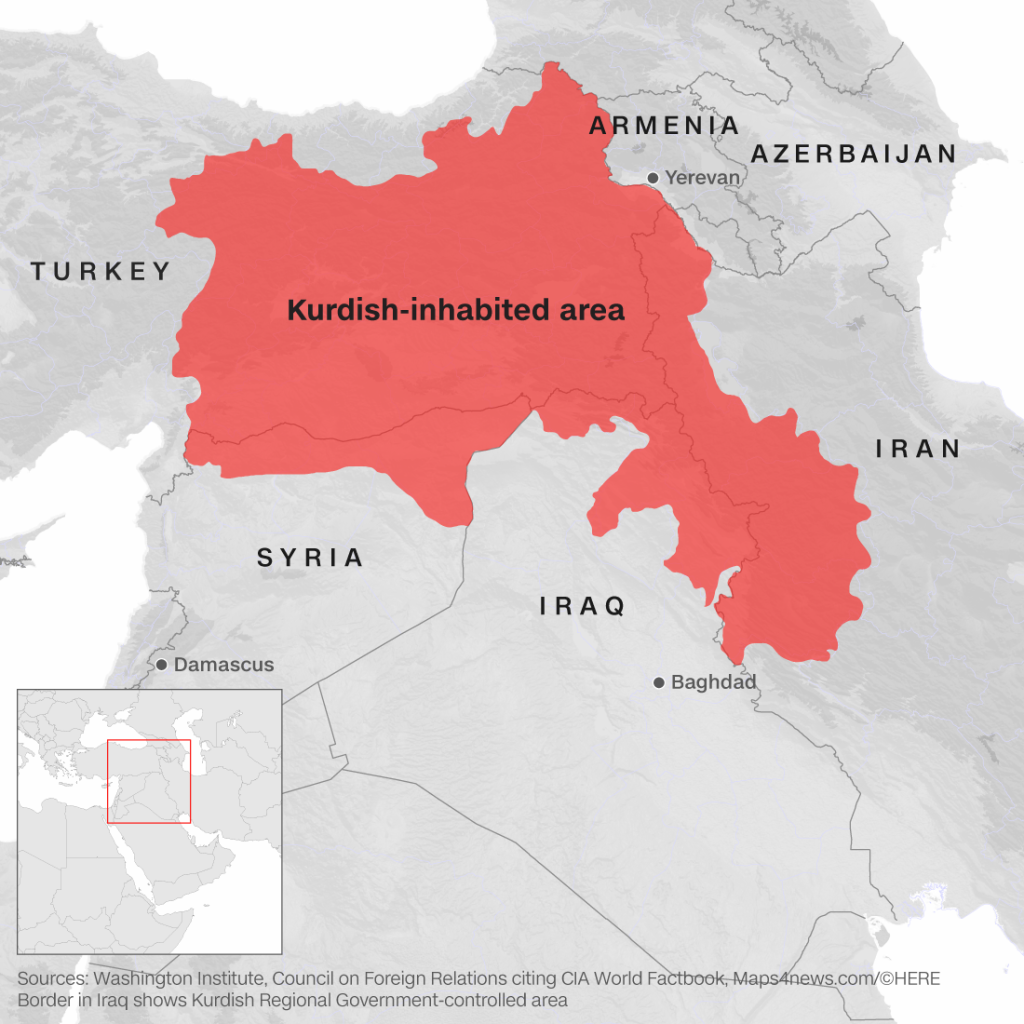
Kurdish folk costumes (and in fact everyday wear) are often in earth colored browns, greys and greens. More brightly colored costumes are worn for special occasions such as weddings and other celebrations. Women wear floor length dresses and sometimes wear short vests. Except in highly conservative and religious regions, women do not typically wear hijab head coverings, although it is typically up to each woman to decide whether to wear it or not. Men wear baggy pants, often with a bulky fabric belt around the waist. They often wear a square vest or jacket.
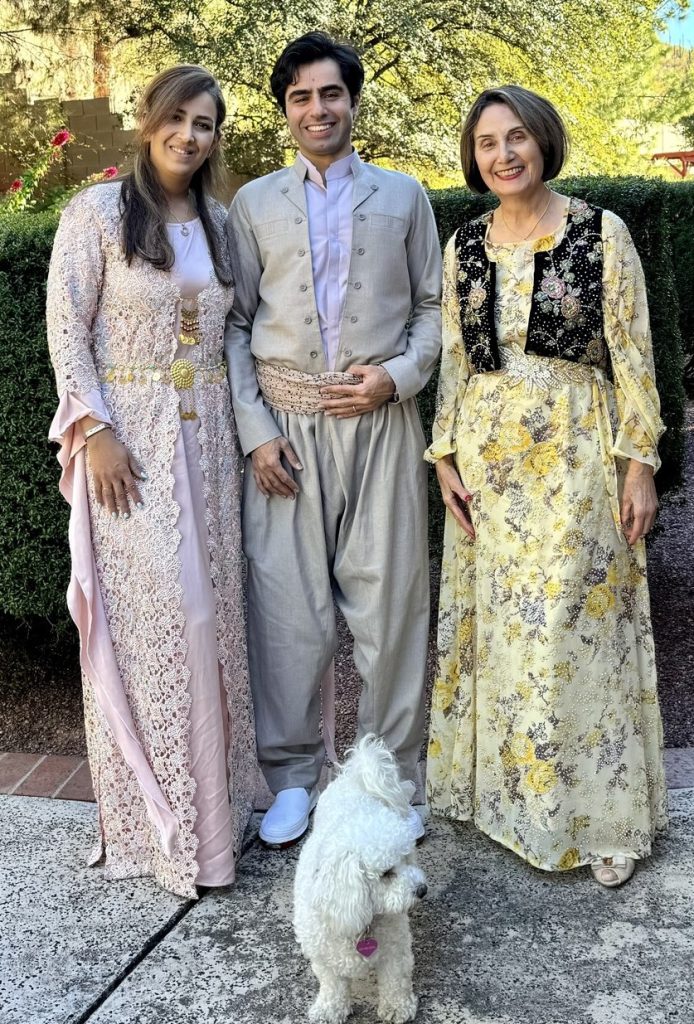
Kurdish music and Turkish music actually have a lot in common. They tend to use the same instrumentation. This is at least partly because musicians from each culture have borrowed extensively from the other. Obviously Kurdish music is most often sung in the Kurdish language.
Kurdish dance, however, has a distinctive style. The dancers in Kurdish dancing stand very close to each other, essentially shoulder to shoulder, with hands clasped interlocking fingers. The hands are held at waist height, with elbows bent and forearms parallel to the floor. Traditionally the dancers dance in gender-segregated line, and often the genders dance in different rooms or spaces. Unlike Turkish dances, which always progress counterclockwise. Kurdish dances can go in either direction.
There are many different dances, but two of the most common are the Halay, which is also done by Turks and Armenians, and the Şêxanî (also spelled Sheikhani, pronounced shay-khan-ee, IPA: /’ʃejxani/), which is also found in Armenia and with the Assyrians. The Halay is a simple walking dancing and in fact the word Halay just means “dance”. But the Şêxanî is characterized by stamping steps and motion that goes in and out of the center of the circle.
- Kurdish Men’s Dance from Dayarbakır: https://youtu.be/dPU6x80e_qg
- Halay: https://youtu.be/yrCaz3YLmxg?si=sOHO_QOOvs-eRkNp
- Şêxanî: https://youtu.be/A4oZq4r2Rw4?si=lK7PSklMnayL_bql
- Women dancing a Şêxanî: https://youtu.be/epi8H0rScLM?si=VI47JKz9_dDvIU7W
3. The Assyrians
The Assyrian Empire was a major world power in very ancient times (ie., 2600 BCE). As one of the major Mesopotamian cultures, they were part of the group that built the first cities and invented a very early form of writing called cuneiform. Today the Assyrians are a minority group occupying territory overlapping to that of the Kurds in Syria, Turkey, Iraq and Iran. The modern Assyrians (who also are called Chaldeans) speak modern Aramaic, the language that people believe Jesus to have spoken. They are also one of the few Christian ethnicities in the region.
Assyrian music and dance also overlap with Kurdish styles. For example, they also do variations on the Şêxani, which they call Sheikhan. Another characteristic dance is the Bagiyeh, which is related to the Sheikhan.
- Bagiyeh video 1: https://youtu.be/09rF34aa_7U?si=lo3mwlaxlmsrA7lZ
- Bagiyeh video 2: https://youtu.be/NIfGUmSjdoM?si=pMPYp3xzVI70wrLy
- Tolama video: https://youtu.be/DhAWUGb09oM?si=M9KAMPuromWh5zFx
Further Reading
- And (1959), Ozkok (1973). See the reference section at the end of the book for full citations.
- Van Dobben, Danielle J.Dancing Modernity: Gender, Sexuality and the State in the Late Ottoman Empire and Early Turkish Republic. Tucson, Arizona: U of Arizona, 2008
- https://nationalclothing.org/middle-east/31-turkey/40-each-of-seven-turkey-regions-has-its-own-clothing-traditions-and-features.html
Some Suggested Dances for Teaching
Türkiye:
- Kendime: http://folkdancemusings.blogspot.com/2014/01/kendime-turkey.html
- Ağir Halay: http://folkdancemusings.blogspot.com/2014/01/agir-halay-turkey.html?q=Halay
- Heyamo (Laz dance): https://folkdancemusings.blogspot.com/2019/08/heyamo-laz-people-turkey.html
- Damat Halayi: http://folkdancemusings.blogspot.com/2013/12/damat-halayi-turkey.html?q=Halay
- Dambaşi (spoon dance): https://folkdancemusings.blogspot.com/2021/10/dambas-turkey.html
- Ordu: http://folkdancemusings.blogspot.com/2014/04/ordu-ordunun-siklar-turkey.html
Kurdish:
- Halay: https://folkdancemusings.blogspot.com/2014/03/halay-turkey-and-kurdistan.html
- Sexani: https://folkdancemusings.blogspot.com/2022/09/sexani-yepyeni-halay-kurdistan.html
- Bablekan: https://folkdancemusings.blogspot.com/2008/02/bablekan-kurdish.html
- Zozan: https://folkdancemusings.blogspot.com/2019/06/zozan-kurdistan.html
Assyrian
- Sheikhan: https://folkdancemusings.blogspot.com/2023/11/tehran-eeshkhan-and-khaldi.html
- Bagiyeh: https://folkdancemusings.blogspot.com/2021/02/bagiyeh-assyria.html
- Tolama: https://folkdancemusings.blogspot.com/2021/02/tolama-assyria.html
Media Attributions
- Figure 15.1: Map of Türkiye © John W. W. Powell. Additional geospatial data cited in map. Used here with permission.
- Figure 15.2: Map of the Ottoman Empire. © John W. W. Powell. Additional geospatial data cited in map. Used here with permission.
- Figure 15.3. Kemençe © Andrew Carnie with ChatGPT, based on a picture from the Musical Instrument Museum, Phoenix
- Figure 15.4: Zurna © Andrew Carnie, personal collection
- Figure 15.5: Kanun © Musical Instrument Museum, Phoenix. Used with permission.
- Figure15.6: Bağlama or Saz © Musical Instrument Museum, Phoenix. Used with permission.
- Figure 15.7: Turkish Kaval © Andrew Carnie, personal collection
- Figure 15.8: Mey, Turkey © Musical Instrument Museum, Phoenix. Used with permission.
- Figure 15.9: Black Sea Costumes © Andrew Carnie with the assistance of Chat GPT
- Figure 15.10: Gaziantep Costumes © Andrew Carnie with the assistance of ChatGPT
- Figure 15.11: Whirling Dervish Costumes © Andrew Carnie with the assistance of ChatGPT
- Figure 15.12: Areas inhabited by Kurdish people today © CIA World Factbook is licensed under a CC BY-SA (Attribution ShareAlike) license
- Figure 15.13: Kurdish Wedding Clothes © Saman Meihami, used with permission

